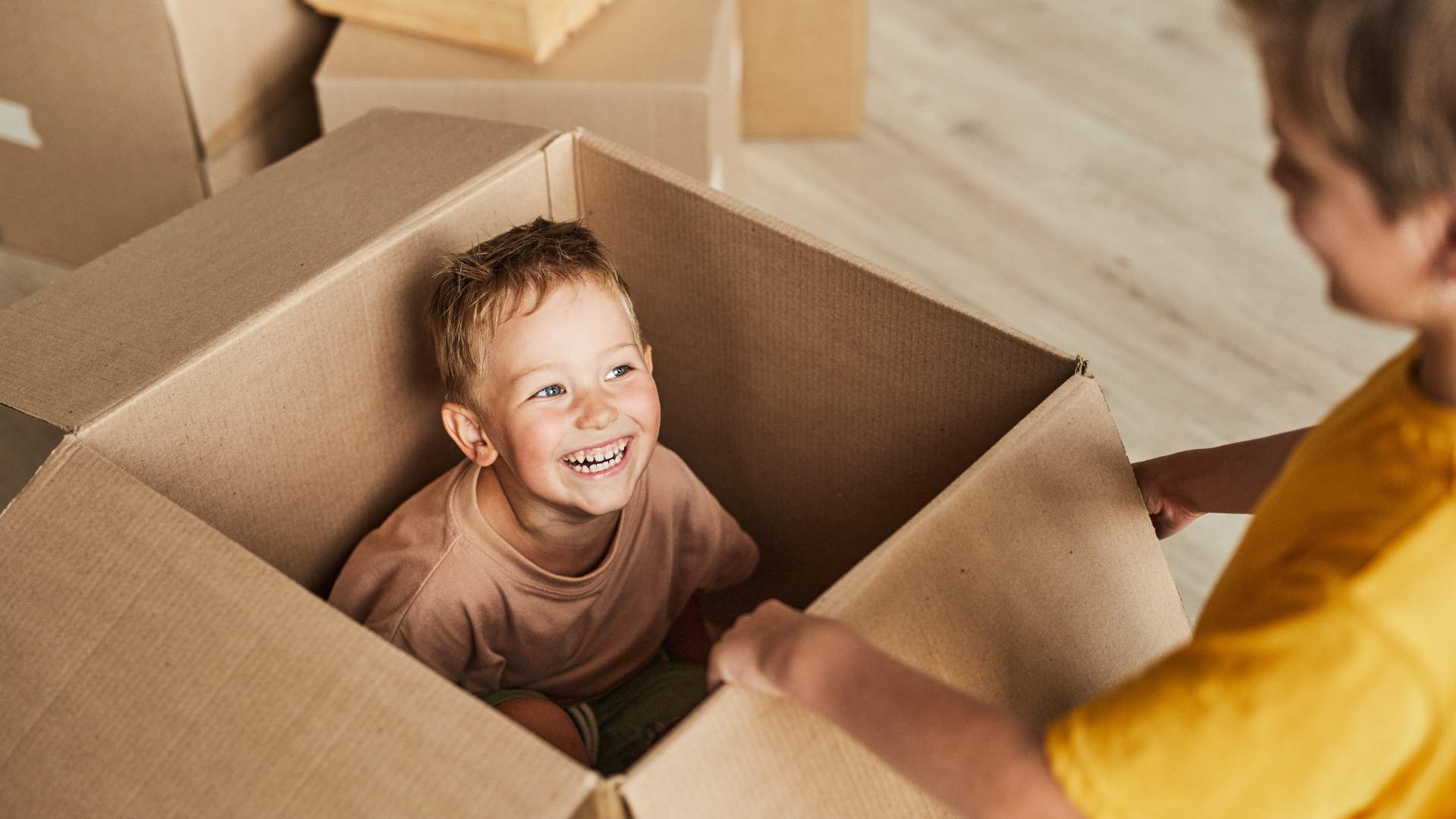From explaining the move to helping children cope with the changes, there are various aspects to consider when moving to a new home. In this complete guide to moving with kids, we’ll explore step-by-step strategies to make the transition as smooth as possible for the entire family.
1. Start with Open Communication:
- Begin the moving process by having an open and honest conversation with your kids. Explain why you’re moving and address any questions or concerns they may have.
- Emphasize the positive aspects of the move, such as new opportunities, new friends, and a chance for adventure.
2. Involve Them in the Planning:
- Make your kids feel part of the process by involving them in the planning. Allow them to contribute ideas for the move, such as choosing paint colors for their new room or selecting decorations.
- Create a moving timeline together so they know what to expect in the coming weeks.
3. Explore the New Neighborhood:
- If possible, visit the new neighborhood with your kids before the move. Explore local parks, schools, and recreational areas to help them get familiar with the surroundings.
- Highlight exciting features of the new area to build anticipation.
4. Maintain Consistency:
- Keep daily routines as consistent as possible before, during, and after the move. Maintaining familiar schedules for meals, bedtime, and other activities provides stability during times of change.
- Consistency helps children feel secure and grounded.
5. Pack a “Moving Day” Bag:
- Pack a bag for each child with their favorite toys, books, and comfort items for the moving day. Having familiar items easily accessible can provide comfort during the transition.
- Include snacks, water, and any necessary medications in the moving day bag.
6. Label Boxes with Fun Colors:
- Make the unpacking process more engaging by assigning each child a color for their belongings. Use colored labels or markers on boxes associated with each child’s room.
- Encourage them to unpack their own boxes, making it a fun and personal experience.
7. Celebrate Milestones:
- Celebrate milestones during the moving process. Whether it’s the last night in the old home, the first meal in the new one, or setting up their new room, acknowledge and celebrate each step.
- Capture these moments with photos to create positive memories.
8. Address Emotional Needs:
- Be attentive to your child’s emotional needs during the move. Allow them to express their feelings and reassure them that it’s okay to feel a range of emotions.
- Offer comfort, understanding, and extra attention when needed.
9. Coordinate School Transitions:
- If changing schools, coordinate with the new school to ensure a smooth transition. Provide necessary paperwork and information, and introduce your child to their new teacher if possible.
- Discuss the move with your child’s current teacher to gather insights and support the transition.
10. Create a Familiar Space in the New Home:
- Set up a familiar space in the new home as quickly as possible. Arrange furniture and decorations similar to their old room to create a sense of continuity.
- Unpack their favorite toys and books first to make the new environment feel more like home.
11. Explore Community Activities:
- Research and introduce your kids to community activities in the new area. Whether it’s joining a sports team, art classes, or scouting groups, these activities can help them make new friends and feel connected.
- Attend local events or fairs to introduce your family to the community.
12. Be Patient and Understanding:
- Understand that it may take time for your kids to adjust to the new home. Be patient, listen to their concerns, and offer reassurance.
- Create a supportive environment where they feel comfortable expressing their emotions.
13. Set Up a Kids’ Corner:
- Designate a special area or corner in the new home as the “kids’ corner.” Decorate it with their input and include their favorite toys and books.
- This designated space can serve as a retreat where they feel a sense of ownership and comfort.
14. Maintain Connections:
- Encourage your kids to maintain connections with friends from their old neighborhood. Facilitate playdates, video calls, or pen-pal exchanges to keep those friendships alive.
- Supportive relationships can help ease the transition.
15. Explore the New School Together:
- Visit the new school with your child before the academic year begins. Tour the campus, meet teachers, and familiarize yourselves with the layout.
- Attend any orientation events to help your child feel more comfortable on the first day.
16. Create a Memory Box:
- As a moving project, create a memory box with your kids. Decorate it together and fill it with mementos, drawings, and photos from your old home.
- This box can serve as a keepsake, preserving memories from the past and symbolizing a fresh start in the new home.
17. Encourage Expression Through Art:
- Provide opportunities for your kids to express their feelings through art. Drawing, painting, or crafting can be therapeutic and help them process the changes.
- Display their creations in the new home to create a sense of pride and ownership.
18. Stay Positive and Optimistic:
- Maintain a positive attitude about the move, even during challenging moments. Your optimism will influence your children’s perceptions and attitudes.
- Emphasize the opportunities and adventures that await in the new home.
19. Plan a Housewarming Celebration:
- Plan a special housewarming celebration to mark your arrival in the new home. Involve your kids in the planning, from choosing decorations to selecting a menu.
- This celebration can help create positive associations with the new space.
20. Seek Professional Support if Needed:
- If your child is struggling to adjust, consider seeking professional support. Child psychologists or counselors can provide strategies to help them cope with the changes.
- Open communication with school counselors can also be beneficial.
Moving with kids involves careful planning, open communication, and a supportive approach. By incorporating these strategies, you can navigate the challenges of relocation and create a positive experience for your children. Remember that each child is unique, so tailor these tips to fit their individual needs, fostering a sense of excitement and adventure as they embark on this new chapter in their lives.


.svg)


